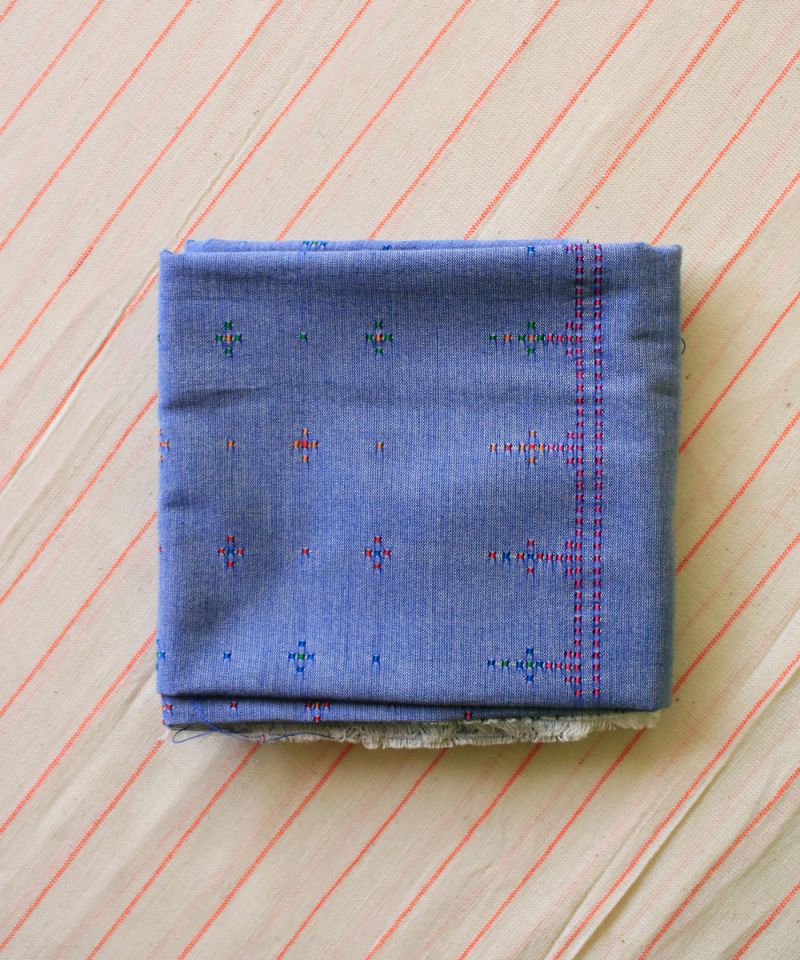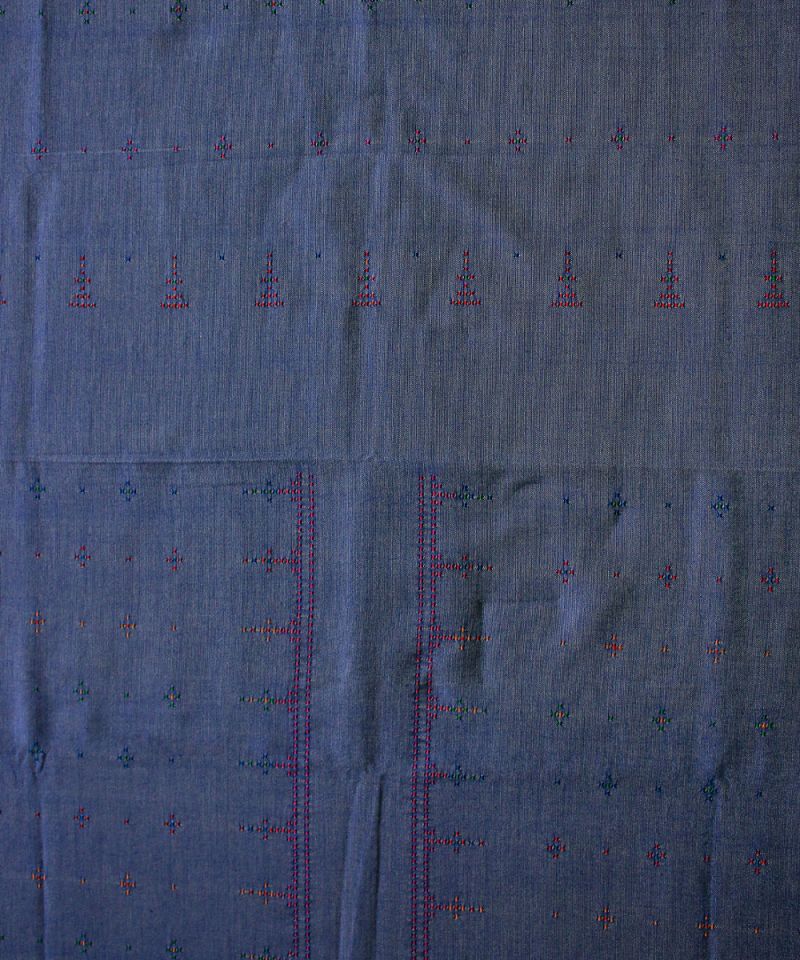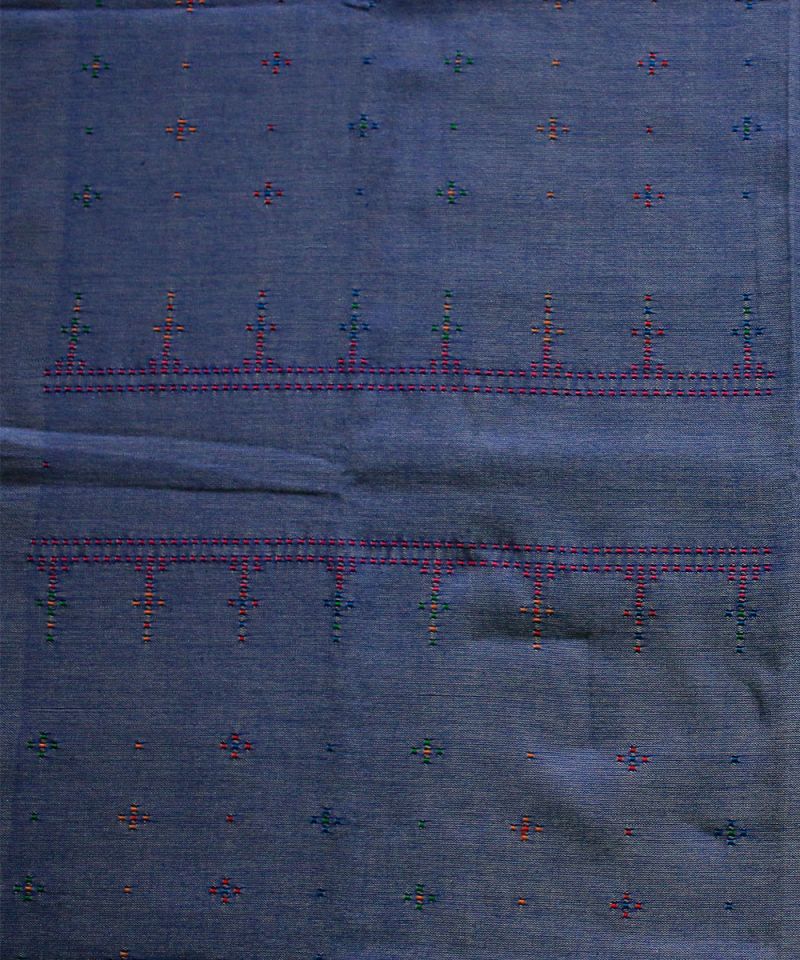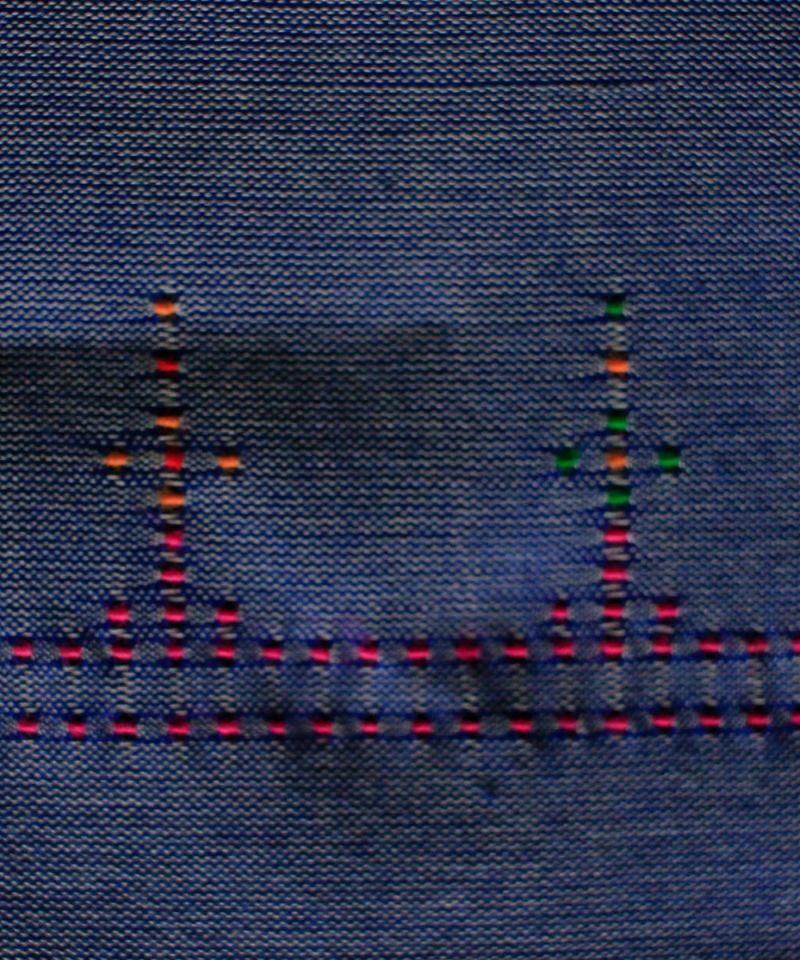







- * Colors may vary due to Digital Photography
Tangaliya weaving is a very unique, rare and typical weave of Gujarat developed and practiced by the Dangasiya community.
According to statistics available at the time of our visit in 2016 Tangaliya weavers were spread out in 26 villages in Surendranagar district, and we visited one of those Dedadara, around 27kms from Limbdi where Dangasiya community resides and weaves the Tangaliya fabric.
Tangaliya is the weaving art associated with Dangasiya community of Surendranagar, Gujarat. Tangaliya as the name suggests is derived from the word “Tangalio” meaning the lower part of the body. Tangaliya was traditionally a 10’x 4’ cloth which was draped around the waist which was woven 20’x 2’ in size and then cut in two parts and joined together to form a 10 by 4 shawl. Dangasiya weavers traditionally made blankets and shawls out of sheep and goat wool for the Bharwad shepherds to wear.
This particular weave remained within these two communities for centuries where the Dangasias shared a symbiotic relation with the Bharwads. The Bharwads provided wool and the Dangasias wove garments for them. The range of garments included Tangaliya, Galmehndi, Dhablo, Dhunsu and Charmalia.
Tangaliya is woven on simple two harness pitloom that is installed in a pit in the entrance room of the weavers’ home. The loom is operated by two foot-pedals (in the pit), leaving the hands of the weaver free for the dana-work.
Tangaliya is woven in plain weave, originally using wool from the sheep, tiny dots of extra weft are twisted around a number of warp threads by the weaver (one dot at a time) giving an effect of bead embroidery to the fabric, thus creating beautiful geometrical patterns and intricate forms by twisting extra weft while weaving.
The motif vocabulary of Daana weaving mainly constitutes of the elements present in the community’s environment. Some examples are peacock (mor), plant (jhaad), Naughara, etc
The making of tangaliya dana is a skill that requires lot of skill and practice. Presently, weavers are making dupattas, kurta pieces, jacket pieces in cotton weaving the danas according to the garment requirements. As this is a time-consuming weave and requires a high level of concentration as well as skill the prices usually remain high at the weavers end. Product diversification is not easy, as it requires a lot of hard work, preparation of graph and weavers time. Sarees are also now being made by the weavers for high end users in mill spun cotton, kala cotton and cottonxsilk depending upon the demand. Many new motifs and patterns are also now being made and developed by the weavers based on the market demand and sometimes the creative genius of the weavers.


Be the first one to share product review.